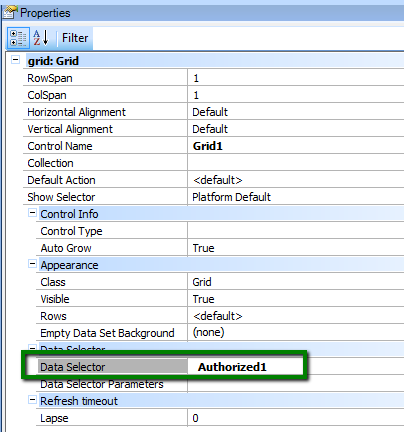This article shows you a basic example of GAM API use.
Imagine a scenario where distributors of a company enter purchase orders through their devices.
As there's only one "Purchase Orders" table in the system, the company wants to identify the salesman who entered the order. So the User Identification (UserId attribute) of the salesman is also stored in the "Purchase Orders" table.
The security information (Users, User information, GAM Roles, GAM Security Policies, etc) is stored in the GAM Repository.
A system requirement is that when the users navigate within the "Work With Purchase Orders", they have to access only the information entered by them and not the information entered by others. So you need to get the data of a specific user (the user who is logged in).
1. Set in your Knowledge Base the Enable Integrated Security property = True
2. Consider the following Transaction object for this example:
PurchaseOrder
{
PurchaseOrderId*
PurchaseOrderDate
PurchaseOrderDescription
UserId
}
The attribute named UserId is based on the GAMUserLogin domain. This attribute is going to store the identification of the user who enters the purchase order into the system. There are several ways to reference the user's id in the GAM database. Read HowTo: Reference GAM users using the GAM API.
In this example, the GETLogin method of the GAMUser external object is used.
In order to go on with the example, apply the Work With pattern to the
Transaction. Aftr that, create a Menu object and add the Work With Purchase Orders as an element of it.
3. The salesmen are requested for their credentials when they enter the application on their devices. Check in the Menu object that Integrated Security Level property = Authentication.
4. The user credentials have to be captured automatically when the user enters the "Purchase Order" data, so the User Identification can be saved. This is solved by programming the Equal rule in the PurchaseOrder Transaction:
Equal(UserId, GetUser());
GetUser is a Procedure object. Its definition is as follows:
Source:
&login=GAMUser.GetLogin()
&errors=GAMRepository.GetLastErrors()
for &error in &errors
endfor
Rules:
parm(out:&login);
Variables:

Notes:
- As "GAMUser" is a "static variable" that instantiates the current user information, you can use static methods to obtain the desired information (GetLogin, GetName, GetEmail, GetId, etc.).
- GetLogin method returns a string of the form <namespace>\<Authentication method>\<username>, e.g: testgam.testgam2\local\admin
After following the previous steps, the User current information will be retrieved and saved in the table when the user confirms the PurchaseOrder Transaction.
5. When the users navigate within the "Work With Purchase Orders", they have to see their own information only. In order to achieve this behavior, one solution is to:
a. Create a Data Selector object with the following code (note that "GetUser" is the procedure defined above):

b. Edit WorkWithDevicesPurchaseOrders object and configure the Data Selector filter, editing the grid Data Selector property in the section detail:

MyCowBook KB